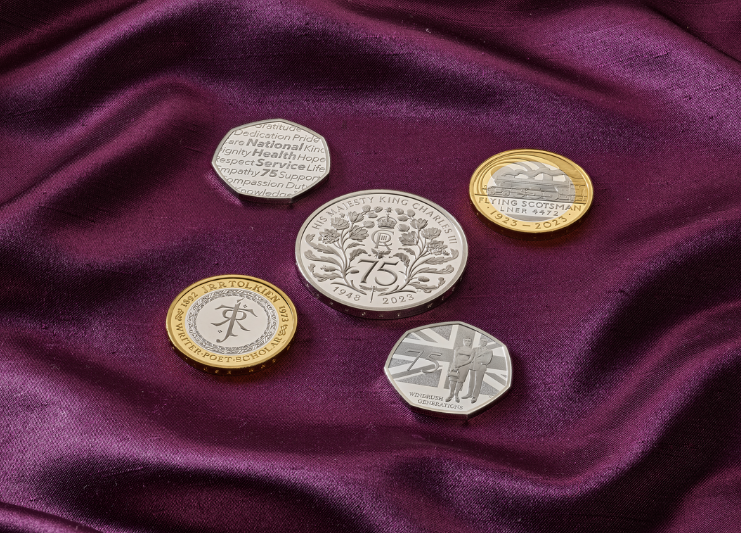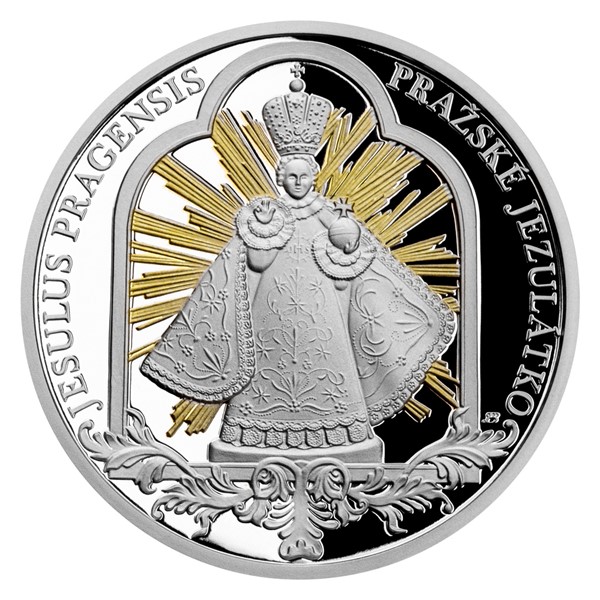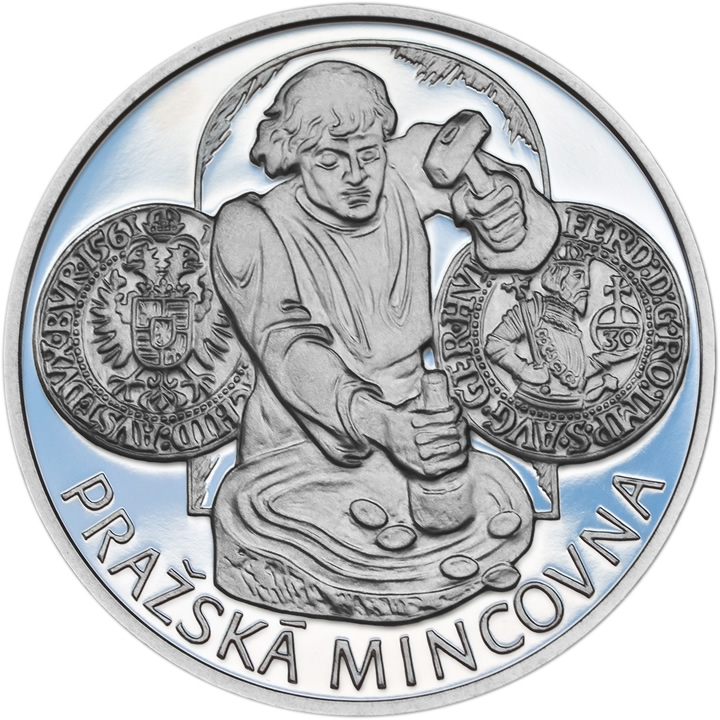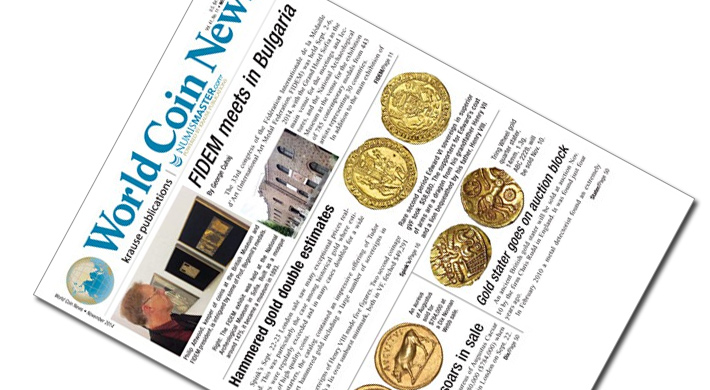Excellent Facts For Laser Processing Czechoslovakia Coins
Wiki Article
Why Is A Gold Coin Or Medal Digitally 3d Modelled From A Cast?
Scanning a maquette of gold coins and medals needs the use of specialized equipment. It records all dimensions of the model, its details, as well as physical features of the model. Digital replication is used for a variety of purposes in the production processHow the Scanning Process Works
3D Scanning Technique: High-resolution 3D scanners are used to capture dimensions and details on models made of plaster. These scanners can capture geometry and measurements through laser scanning and structured light as well as other techniques.
Capturing surface information - The scan emits light beams or lasers at the model. The scanner tracks the distortions and reflections these beams cause, thus recording the surface information.
Data collection- The scanner collects data as it travels across the model. This creates an electronic representation of the model's contours, geometry and details.
Conversion to 3D Model- The collected data points are processed using specially designed software, which converts the information into a digital 3D model. This model reflects the physical dimensions and features of the plaster maquette.
There are a variety of reasons to make an 3D digital model
Digital 3D models allow for exact replication of the physical model's dimensions and details. It is essential to maintain this accuracy in order to ensure that the design and style of the gold coin or medal matches the original.
Digital models are able to be easily adjustment or reworking. Designers can alter the 3D models without altering the original plaster maquette.
Compatibility of Digital 3D Models with Manufacturing Processes. Digital 3D model are compatible with various manufacturing processes, including CNC manufacturing.
Digital 3D models can be used to archive and document the design. They can be digitally archived to be used as a reference for future use or reproductions as well as documents from the past.
By scanning the plaster model and then creating digital 3D models that designers and manufacturers can streamline the production process, ensure accuracy in replication and make use of the latest manufacturing technologies to make gold coins or medals with precision and fidelity to the original design. View the top rated Scanning and 3D Modeling Prague Mint gold medals website examples. including gold american eagle price, buy gold bars, double eagle coin, mexican gold coins, gold penny, gold coins and bullion, gold bullion cost, five dollar gold coin, 1oz gold eagle coin, 50 pesos gold coin and more.

What Is The Reason Why Gold Coins Or Medal Dies Undergo Vacuum Hardening?
Vacuum hardening is a procedure that involves exposing dies to high temperatures and a controlled atmosphere in furnaces. This is a brief overview of how to vacuum harden dies.
To make dies that will be used to strike coins or medals, they should be clean and free from any contamination or residues.
Loading Vacuum Furnace
The dies may be put in a vacuum oven that creates a vacuum within the heat-treating area.
Evacuation via Airplane
The vacuum furnace eliminates the air in the chamber, creating a controlled vacuum, devoid of any oxygen or other gases. This is done to avoid oxidation as well as guarantee uniform heat treatments.
Heating Phase
The furnace needs to be heated to a temperature needed for hardening the dies. The range of temperature will be determined by the type of material and the hardening process.
Soaking with High Temperatures
The dies must be held at the highest temperature for a specified time to allow the material to attain and maintain its desired level of hardness.
Quenching (or Cooling)
After soaking and the dies are then cool or quenched with specialized techniques. The fast cooling process is able to lock in the required strength and hardness in the material.
Tempering (Optional).
In certain circumstances the process of tempering can occur as a result of hardening. Tempering is the process of heating dies up until they reach a temperature that is lower to relieve stress while maintaining their toughness.
Quality Control and Inspection
The molds that are hardened are examined and tested to make sure that the dies are in compliance with the requirements.
Post-Treatment Handling-
Die dies are then processed further including coating or polishing, prior to being used for the coins or medals.
The method of vacuum hardening improves die durability and wear resistance as well as the lifespan of the dies used to create silver or gold coins and medals. In ensuring a safe and free of contaminants it provides an efficient and consistent method to ensure that the dies are hardened. Take a look at the most popular vacuum hardening Prague Mint gold coins site recommendations including buy gold bars from bank, coins and gold, gold dollar coin, 24 karat gold coin, american eagle gold coin 1 oz, purchase gold coins, purchase gold coins, 10oz gold bars, gold coins and bullion, spanish gold coins and more.

How And Why Are Certain Finishes, Like Texture Or Matte Surfaces Created Using Sandblasting?
This technique can be used to give matte or textured effects on gold-plated coins and medals. The procedure of Sandblasting is explained.
Surface preparation. The medal or coin is placed inside a chamber with an air-compressor connected nozzle. The chamber is typically enclosed to contain the abrasive material that is used to prepare the surface.
Abrasive material selection- High speed propulsion of fine particles of abrasive abrasives like silicon carbide or sand or glass beads, and aluminum oxide onto the surface.
High-Pressure: The abrasive grains are driven to the surface with compressed air or using another high-pressure equipment. The force and speed that the particles encounter the surface produce the desired finish or texture.
Texture creation. The force of an abrasive surface alters the topography of the surface to create a textured, matte finish. This technique allows you to roughen certain areas or to create a texture that's consistent across the surface.
Controlled Application- Sandblasting may be controlled in terms of intensity the duration, angle, and intensity of application to achieve varying textures or finish. Different abrasives and pressure levels yield different results.
Sandblasting - Why it is done
Texture Variation Sandblasting is an excellent technique to create various designs or textures on medals and coins like glossy or frosted surfaces. It gives the appearance and unique features.
Aesthetic Enhancement: Sandblasting changes the surface appearance, diffusing light reflection and diminishing shine. This can increase the coin's or medal's visual appeal. Matte finishes, for instance, may highlight specific designs by reducing the reflections and glare.
Anti-Glare Property: Sandblasting can create matte or textured surfaces that minimize reflections, glare and makes the medal or coin more attractive.
The contrast of design elementsSandblasting can produce contrast between polished and textured components of a coin or medal. This can help to highlight particular features or to add visual depth.
Sandblasting allows for customization that includes artistic expression and the creation of unique medals or coins with finishes or textures customized to meet specific design requirements.
Sandblasting can create various textures and finishes on the gold medals and coins. This improves their overall appearance, appeal, as well as aesthetics. Check out the recommended sandblasting Prague Mint gold medals website advice. including gold coins for sale, purchasing gold bars, gold coins for sale near me, gold and coin shops near me, gold bullion, gold sovereign, ngc grading, gold and silver dealers, gold american eagle price, coin buy silver and more.

How Do Gold Coins And Medals Undergo Quality Checks To Ensure That They Meet The Requirements??
Gold medals or gold coins require quality checks after minting in order to ensure precision in surface quality, as well as conformity to the specifications. These checks involve several steps Visual Inspection-
The inspectors inspect the medal or coin visually for surface flaws or imperfections, as well as blemishes. They look for marks, scratches or marks that could alter the value of a coin or its appearance.
Dimensions and weight
Weighing and measuring each medal or coin will ensure that it satisfies the specified weights, diameters, thicknesses, and overall dimensions as per the specifications of the design. Any deviations from the design specifications may suggest a quality problem.
Composition and Purity of Metal
Quality checks involve confirming the purity and gold content of the medals or coins by using various methods of testing, such as X-ray fluorescent (XRF) analysis or chemical assays. The gold content is checked to make sure they are in compliance with the standards of quality and quantity.
Edge Inspection
Inspectors inspect the edges of the coin or medal for uniformity, reeding and any irregularities. The edge is a good place to include security elements or designs.
Strike Quality
To ensure uniformity in the appearance of all coins, we assess the quality and accuracy of the strike.
Errors in minting and proofing
The value of special editions and proofs are determined by an in-depth examination to identify any flaws or flaws that may affect the coin.
Packaging and Packaging and
The quality checks extend to the presentation and packaging of medals and coins, making sure that they are properly sealed, stored or presented in holders or cases without any damage or contamination.
Random Checks and Sampling
Random sampling or checks are conducted across batches to ensure the quality standards are maintained throughout the process of minting.
Compliance and Documentation
All quality checks are documented to ensure that the coin is in compliance with regulations as well as minting standards and certification specifications. These records are used to prove the authenticity and quality of the coin.
Rejecting non-conforming pieces-
Coins or medals that do not meet the specific quality standards are disqualified or sent for reprocessing to maintain the integrity and overall quality of the minted products.
In conducting these extensive quality checks, mints and certification bodies assure that gold coins and medals meet the standards for purity, precision aesthetics, and value, reassuring investors, collectors, and consumers of their quality and authenticity. Take a look at the recommended Czechoslovakia gold medal quality control more tips. including hidilyn diaz, twenty dollar gold coin, gold coin with angel on both sides, buy gold bars from bank, gold coins, buy gold bullion, olympic gold medal, 1 ounce gold bullion, mexican gold coins, canadian gold maple leaf coin and more.
